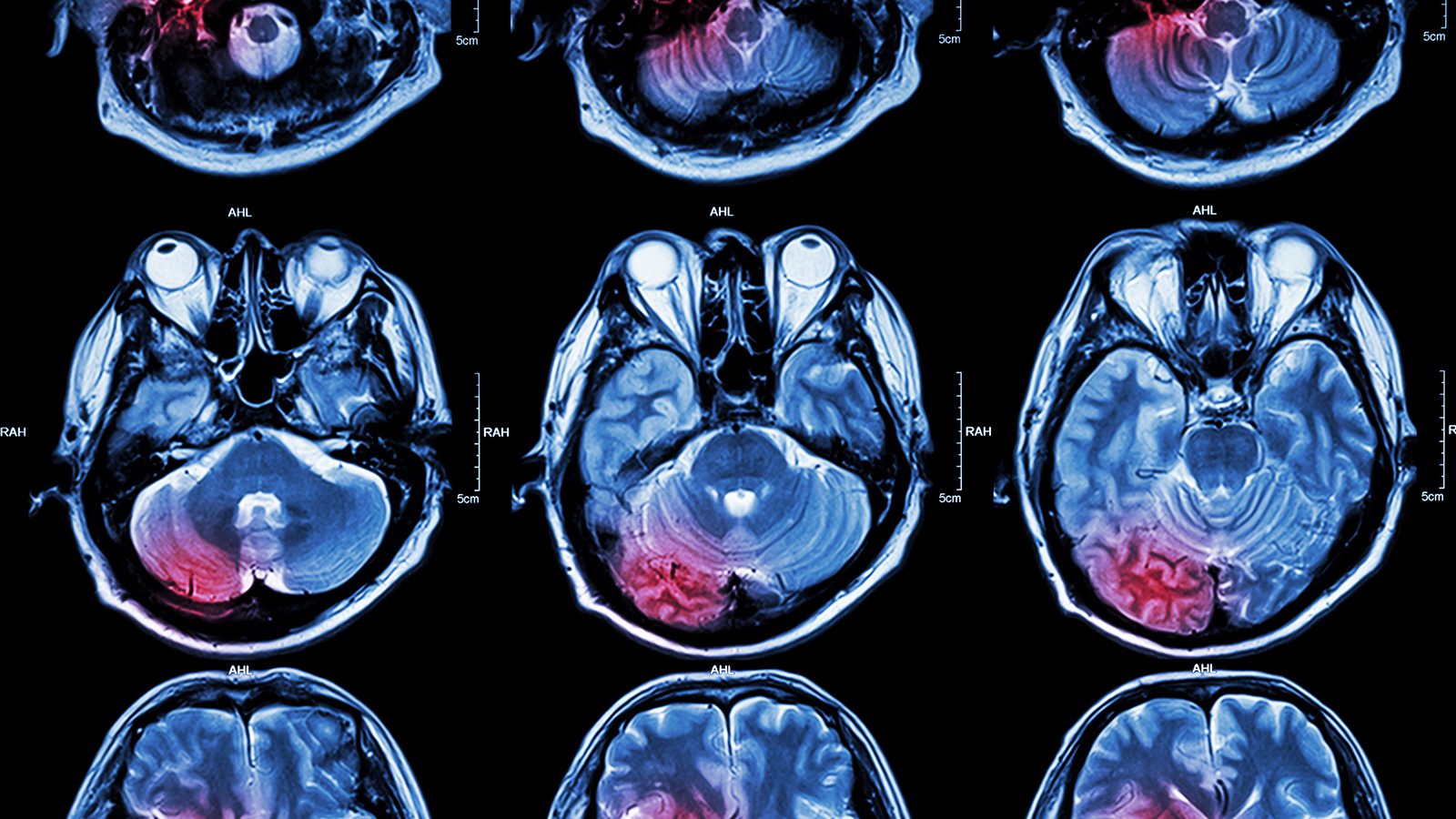A silent stroke has no symptoms. Strokes can happen when a blood clot obstructs the blood vessels in your brain. The blockage stops the blood and oxygen from getting to the parts of your brain, causing brain cells to die. Depending on where the clot is located, it will cause symptoms like weakness or problems with your vision. But a silent stroke is small enough and usually occurs in a part of your brain that doesn’t control any vital functions or significant movement. This is why it’s called a silent stroke. Here is some vital information on both silent and traditional strokes that you should know.
How can a stroke be silent?
It’s possible to have a stroke and not know it. This is because a silent stroke has no traditional symptoms. You may only find out you had a stroke if you have a brain scan for another reason. Many patients are surprised to learn they’ve had a stroke because they had no signs of it. This doesn’t mean that silent strokes aren’t severe. If you’ve had a silent stroke, it increases your risk of having a typical stroke.
Who is most at risk of a silent stroke?
Certain people have stroke risk factors because of their health issues. Remember, if you’ve had a silent stroke, you have a greater chance of having a stroke with symptoms. Here are conditions that put you at risk of a symptomatic stroke.

- Heart disease: Heart disorders increase your chances of having a stroke. This is because plaque builds up in your arteries, causing blockages of blood and oxygen to your brain.
- High blood pressure: High blood pressure damages your blood vessels, causing them to get too narrow or rupture. It also causes blood clots in your brain or arteries, which blocks the blood flow to your brain.
- High cholesterol: Having high cholesterol puts you at risk for a stroke. Cholesterol in your blood causes fatty deposits to plug up your arteries so they become narrow and complex, and blood won’t flow well.
- Diabetes: Because diabetes prevents your body from assimilating food properly, your body can’t make or use insulin, which causes glucose to build up in your blood. High sugar levels damage your blood vessels and increase your stroke chances.
- Smoking: Smoking almost doubles your chances of having a stroke. This is because smoking increases your blood pressure and lowers the oxygen levels in your blood.
- Afib: If you have afib, you don’t have a normal heartbeat. This can lead to a blood clot that plugs up the blood and oxygen flow to your brain, leading to a stroke.
- Obesity: Excess body fat is linked to bad cholesterol. This may lead to high blood pressure, diabetes, and hardened arteries.
What is the most common cause of a stroke?
You can have a stroke at any age. If you have a family history of strokes, this puts you at a higher risk. But if you have high blood pressure, you have a higher chance of having a silent or symptomatic stroke. According to the Centers for Disease Control (CDC), high blood pressure is the leading cause of strokes. Talk to your doctor if you think you have high blood pressure. They will check your blood pressure and give you medication to bring it under control. You may also need to incorporate lifestyle changes to lower your blood pressure.
How can you prevent a silent stroke?
The best way to prevent a silent stroke and a symptomatic stroke is to follow these suggestions:
- Don’t smoke: If you already smoke, try to quit. There are many helpful medications, patches, and even gum to stop smoking. You will sleep better, feel better and even be able to taste foods better.
- Eat a Mediterranean diet: Eat a diet high in fresh, wholesome vegetables, pristine fruits, whole grains, chicken, and fish. Eat only a small amount of beef. Use olive oil for salads and cooking.
- Lower the sodium in your diet: Aim to eat no more than five grams of sodium per day. This reduces your risk of high blood pressure, heart attack, and stroke. Use spices or lemon juice to add flavor to your foods.
- Control your weight: Being overweight leads to health problems such as high blood pressure or diabetes. All these conditions put you at risk of a stroke.
- Avoid too much alcohol: Don’t drink too much alcohol if you want to reduce your risk of a silent stroke. Alcohol raises your blood pressure levels and your triglycerides, which cause fat to form in your blood, which results in hardened arteries. Women should stick to no more than one alcoholic drink a day, while men should have only two drinks per day.
- Regular physical: Staying active lowers your chances for both a silent and a symptomatic stroke. Add exercise to your daily life for the best results. You don’t need to join a gym. There are many ways to be active without gym memberships, such as biking, walking, gardening, hiking, or swimming.
What else puts you at risk for a stroke?
Several other factors put you at risk for a stroke, including:
- Genetic circumstances: If you have a family history of high blood pressure, you might notice a pattern of strokes in your family. High blood pressure damages your blood vessels, making them too narrow to flow through. This leads to a rupture of stroke.
- Sickle cell disease: This is another genetic factor that could put you at risk for a stroke. This condition is linked to an ischemic stroke, which affects mostly African Americans. If you suffer from this disease, your red blood cells don’t form in a regular shape. If one of the cells gets caught in your blood vessel, it leads to a stroke.
- Family history of a stroke: It only makes sense that if your grandparents, parents, aunts, or uncles had a stroke, you are at risk. If you change your lifestyle while you’re young, it could help you avoid having a stroke later in life.
Symptoms of a silent stroke
The effects of a stroke depend on the area in your brain where the stroke occurs, the severity of the stroke, and the type and number of strokes you’ve had. When your brain gets damaged because of a stroke, you will lose some function in part of your body.
Your brain has three areas:
- Cerebellum: Front and top of your brain
- Cerebrum: Left and right sides of the brain
- Brainstem: The base of the brain
Cerebrum
The effects of a stroke will be different depending on which region of your brain occurred.
If the stroke occurred in your cerebrum and what side of the cerebrum it occurs, these areas of your body will be affected.
Stroke on the left side hemisphere of your cerebrum side effects include:
- Speech problems
- Lack of understanding of language
- Right side weakness
- Paralysis on the right side
- Problems with your vision, especially the right field of vision in both eyes
- Failure to do math, reason, or analyze
- Behavioral changes such as hesitancy, extreme caution, or depression
- Can’t write, read or learn new things
- Memory difficulties
Stroke on the right hemisphere of your cerebrum. Side effects include:
- Left-sided weakness
- Left-sided paralysis
- Visual problems, especially the left field of vision in both eyes
- Can’t recognize body parts
- Memory problems
- Can’t localize
- Behavior changes such as inappropriate actions and speech, depression, and lack of concern for others and yourself
- Can’t toilet yourself
- Can’t dress or eat
Cerebellum
The cerebellum of your brain is behind and underneath the cerebrum at the back of your skull. Strokes aren’t as common in this portion of your brain, but if you have a stroke here, the effects can be debilitating.
Side effects of a stroke in the cerebellum include:
- Can’t walk
- Loss of balance and coordination
- Headaches
- Vomiting
- Nausea
- Dizziness
Brainstem
The brainstem is at the bottom of your brain, right at your spinal cord. Your life support functions are here, such as your heartbeat, your blood pressure, and your breathing. Damage because of a stroke in your brain stem is life-threatening.
Side effects of a stroke in your brainstem include:
- Heart function problems
- Breathing problems
- Balance problems
- Coordination problems
- Weakness
- Paralysis
- Swallowing difficulties
- Speaking problems
- Chewing problems
- Coma
- Vision problems
- Death
Final thoughts on knowing the signs of a silent stroke
Silent strokes may not have symptoms, but they are serious. If you’ve had a silent stroke, you may not know it unless you have a brain scan for some other reason. If you find you’ve had a silent stroke, you are at a greater risk of having a symptomatic stroke. This type of stroke can be debilitating, depending on where it occurs in your brain.
It’s important to be aware of stroke risk factors such as your family history, genetics, or sickle cell disease. Other lifestyle factors put you at risk. Your health is important. Choosing a healthful lifestyle will go a long way in helping to prevent a stroke.






















